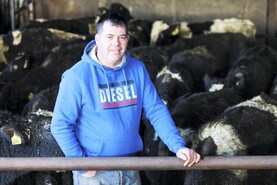Sylvester Bourke from Arklow heard the news coverage of the pensions time bomb after the recent budget. It prompted him to make an appointment with his Social Welfare office to check on his own contributions. His aim was simple: to check if he would have enough PRSI contributions paid when he reaches 68 – the time he would be eligible for full pension.
Sylvester, aged 52, started working on the family farm when he was 18.
“After the first year our accountant said that we should be paying PRSI stamps,” he told me.
So for 10 years, his father paid a K1 stamp for him, the only one he was eligible to pay. In 1993, his father went into the early retirement scheme. Sylvester took over and started paying S-class stamps. So he has already paid over 20 years of S-class PRSI contributions and hopes to pay up until he retires.
“The social welfare office confirmed that a K1 stamp was the only permissible stamp for a family member to pay for another family member at the time,” Sylvester told me.
However, they also said the 10 years of K1 stamps have ‘diluted’ his overall record. It means that he could drop below 40 contributions per year. Under the new system this would see him get €24 less per week when he reaches retirement age. It might not seem much, but it’s nearly €1,250 a year. For Sylvester it was a shock that he had not heard of it before.
“How many other people have paid K-class PRSI contributions?” he asked me. Before September 2012 it would have not made a difference, as once you had over 10 years of contributions you got the full pension.
However, when the yearly average came in, the averaging starts from the first year you paid contributions. By paying the K contributions, which are not recognised for state pension, you actually reduced the average. It is another anomaly that meant by doing right, you were wronged.
If Sylvester’s father did not pay any contributions he would have been better off.
Noel Leahy, our PRSI expert, said that he has started to come across a number of cases like this. Up until today, the only eligible contribution that could be paid to family members was K or M, both of which have no benefits attached.
Sylvester has contacted the IFA and his local politician to raise the issue. It is ab aspect that should be reviewed by Minister for Social Proection Regina Doherty. Have you been impacted by paying K or M contributions? We want to hear more, so email moneymentor@farmersjournal.ie
Eleven different PRSI contributions
There are no fewer than 11 different PRSI classes. These are A, B, C, D, E, H, J, K, M, S and P. The social insurance payments to which you may become entitled depend on the PRSI class you are in.
Class A is the most common PRSI class as most employees in Ireland pay PRSI class A. It applies to people in industrial, commercial and service-type employment who are employed under a contract of service with pay of €38 or more per week from employment. It also includes civil and public servants recruited from 6 April 1995.
Farmers, as self-employed people, come in under class S. Class S contributors are not entitled to the full range of social insurance payments – the main one they are ruled out of is the job seekers benefit.
Class K generally applies to people under 70 years of age who are not insurable, employed under the Social Welfare Acts.
This includes people getting a pension from a former occupation, people who normally pay class S but have reached 66 years of age, and people receiving income from positions of certain office holders, eg judiciary, state solicitors. It also, importantly, includes prescribed relatives. A ‘prescribed relative’ is a parent, grandparent, stepparent, son, daughter, grandson, granddaughter, stepson, stepdaughter, brother, sister, half-brother or half-sister. This is where Sylvester fitted in.
The other one to watch is if weekly income is below the threshold for class K contribution. Then class M applies. You use class M contributions for people who are under 16 years of age. CL






 This is a subscriber-only article
This is a subscriber-only article









SHARING OPTIONS: